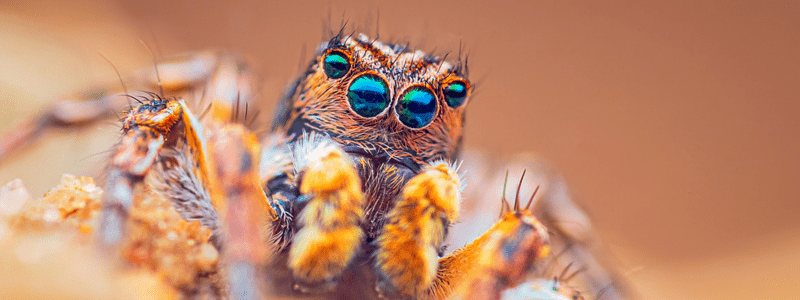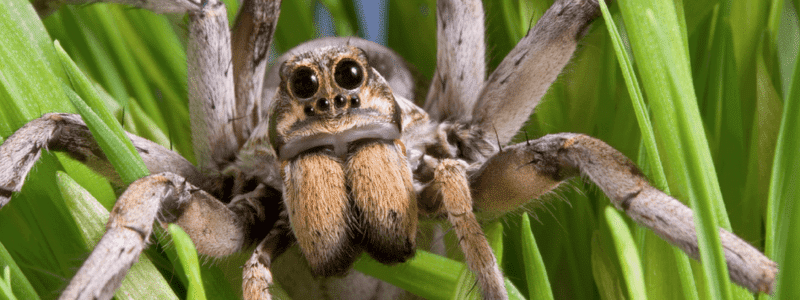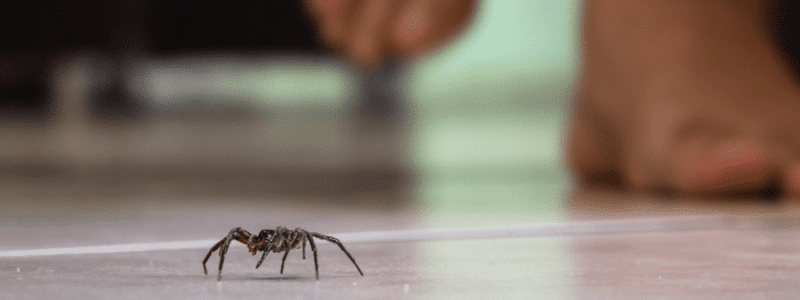
Spider Pest Control in Phoenix, Arizona
Eight Eyes, Eight Legs, Quick as a Bullet.
In Arizona, spiders are active year-round because the state maintains the perfect climate for them to live comfortably. They’re sneaky and good at hiding, and they are easy to miss. Spiders hide in cracks and crevices, dark corners, clutter, and pretty much anywhere else they can go without being seen.
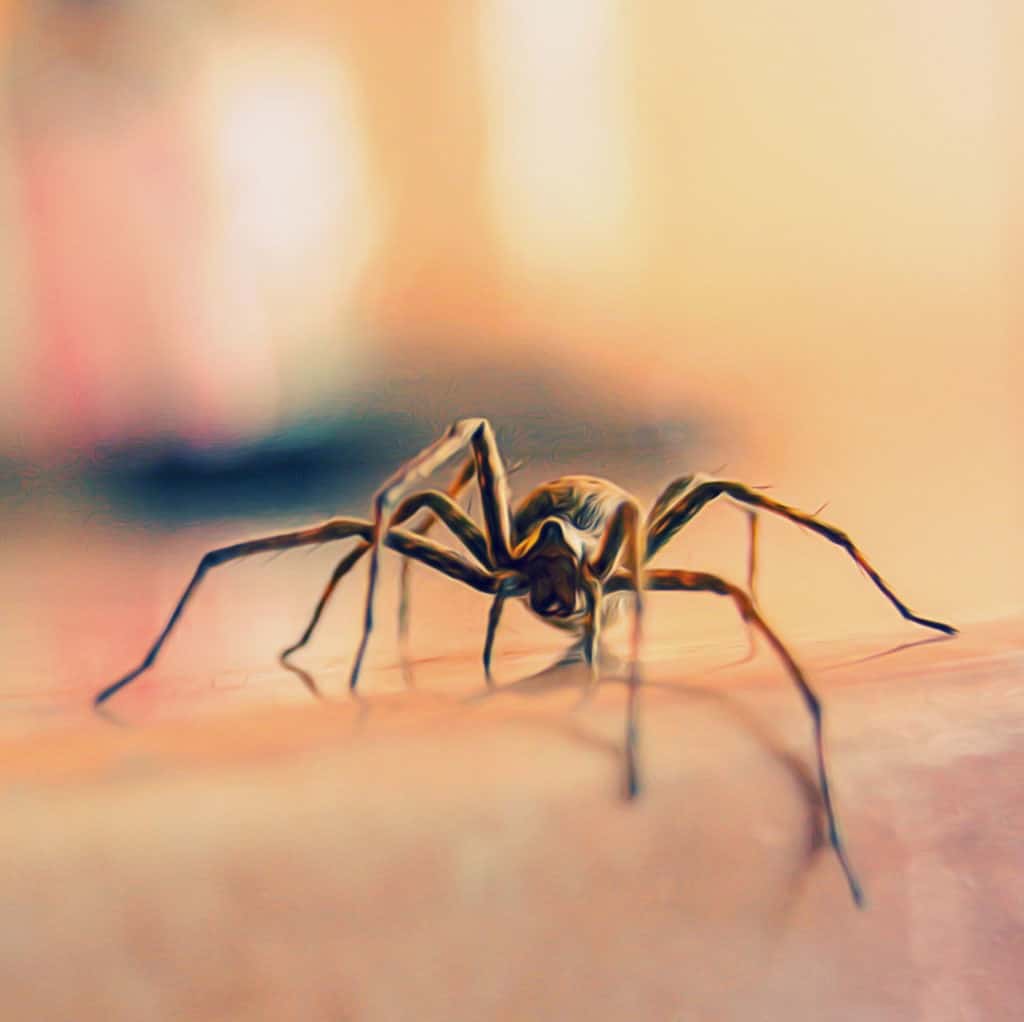
Arizona’s Most Popular Spiders
Brown Recluse
The brown recluse is most commonly found in the southern and central states. Unlike other spiders, the brown recluse doesn’t spin a web and prefers to live in snug and dark places like a pile of firewood or a cardboard box.
They’re infamous for their venomous bite that destroys blood vessels, nerves, and skin tissue. The longer a brown recluse hangs out in your home, the more time they have to lay eggs and increase their population. Due to their venom posing a danger to both people and pets, it’s good to get rid of a brown recluse if you spot it.
Black Widow
Black widows are, unfortunately, very common in Arizona. Like a brown recluse, a bite from a black widow can cause serious harm to the nervous system. It’s recommended that you seek medical attention after being bitten by one of these girls – yes, only the female bites. Male black widows are harmless and can be differentiated from females by their lack of red hourglass markings.
Black widows prefer tight, dry, and dimly lit environments and are prone to bite if you accidentally press your skin up against one in your bed, on a couch, or when putting your shoes on.
Wolf Spider
Like the black widow, wolf spiders are venomous and common in Arizona but aren’t necessarily dangerous to humans.
These fuzzy insects got their name because of their similar hunting patterns to wolf packs. They tend to avoid people but will bite if they feel threatened or you accidentally come into contact with one. A bite from a wolf spider can cause an allergic reaction and is comparable to the pain and danger of a bee sting.
Spotting a wolf spider in the home can point to a greater infestation issue as they are commonly lured by their food supply of smaller insects.
Tarantula
Tarantulas are big, hairy spiders and a prime example of a species that appears more frightening than it is dangerous. Typically found in arid landscapes, they pose little threat to humans. While their bite may cause some discomfort and swelling, their venom is harmless to humans.
Grass Spiders
Grass spiders are overall harmless to humans and are usually identified by their large sheet-like webs which funnel over low grass or shrubs. They like to hang out in grassy lawns and search for insects to eat.
Grass spiders are often mistaken for wolf spiders due to their coloring. They have long legs with brown and white bodies and typically live outdoors. However, they occasionally find their way into garages, woodpiles, and clutter.
Jumping Spiders
These are characterized by their large set of eyes in the front of their body. Jumping spiders have compact bodies with shorter legs. While they tend to be black, jumping spiders can be brown or gray with bright coloration markings. These markings can come in gray, yellow, red, blue, green, or white spots as well as stripes.
Jumping spiders don’t build webs and only bite in self-defense. They’re less likely to be seen in the home but may be found around your lawn and yard, hiding in bushes. Overall, they’re harmless and can be left alone to prey on insects outside the home.
American House Spider
House spiders are mostly grey and compact, about the size of a nickel (6 to 9 mm in diameter). They’re typically harmless and prefer to hide in cracks and crevices in your home. They’re the most commonly seen spiders in houses, coining them such a general title.
House spiders are found all over the states and fall under other names such as cobweb spiders and domestic house spiders. Unlike other species, American house spiders aren’t poisonous, and their bite is likely to cause short-term pain.
Arizona Brown Spider
The Arizona brown spider is primarily found in Arizona, as its name suggests. Due to their appearance, the Arizona brown spider is often mistaken for brown and desert recluses. They have three sets of eyes, yellowish to light brown bodies, and are typically 0.83 cm (0.33 in).
They have markings that resemble the shape of a violin, which gives the nickname “violin” or “fiddle” spider. While they are less harmful than other species, Arizona brown spiders are still venomous and their bites can cause painful symptoms.
Cellar Spiders
Cellar Spiders have a light tan coloring and long legs, commonly mistaken for daddy long legs. They’re extremely common household pests, preferring basements, as their name suggests. They like cool spots underground and can typically be found hanging upside down. Cellar spiders are slow, clumsy, and will shake if their web is approached. Despite their behavior, they are harmless to people.
Are Spiders Harmful?
Almost all spiders are venomous, but not all of them are deadly. The bites of most spiders found in Arizona cause only mild reactions. The exceptions are bites from black widow and brown recluse spiders, which can be fatal to humans. If you suspect a black widow or a brown recluse has bitten you, seek medical attention immediately.
Why Are Spiders Around Your Home?
- A good food source might lead spiders into your home. They enjoy common household pests such as roaches, mosquitoes, and flies.
- Spiders enter through windows, doors, and cracks or gaps in your foundation.
- Weather conditions can drive spiders inside. They’ll seek shelter from the rain and extreme temperatures.
- Leaves, woodpiles, and other clutter outside of your home can serve as a staging ground, providing easy access for spiders to come inside.
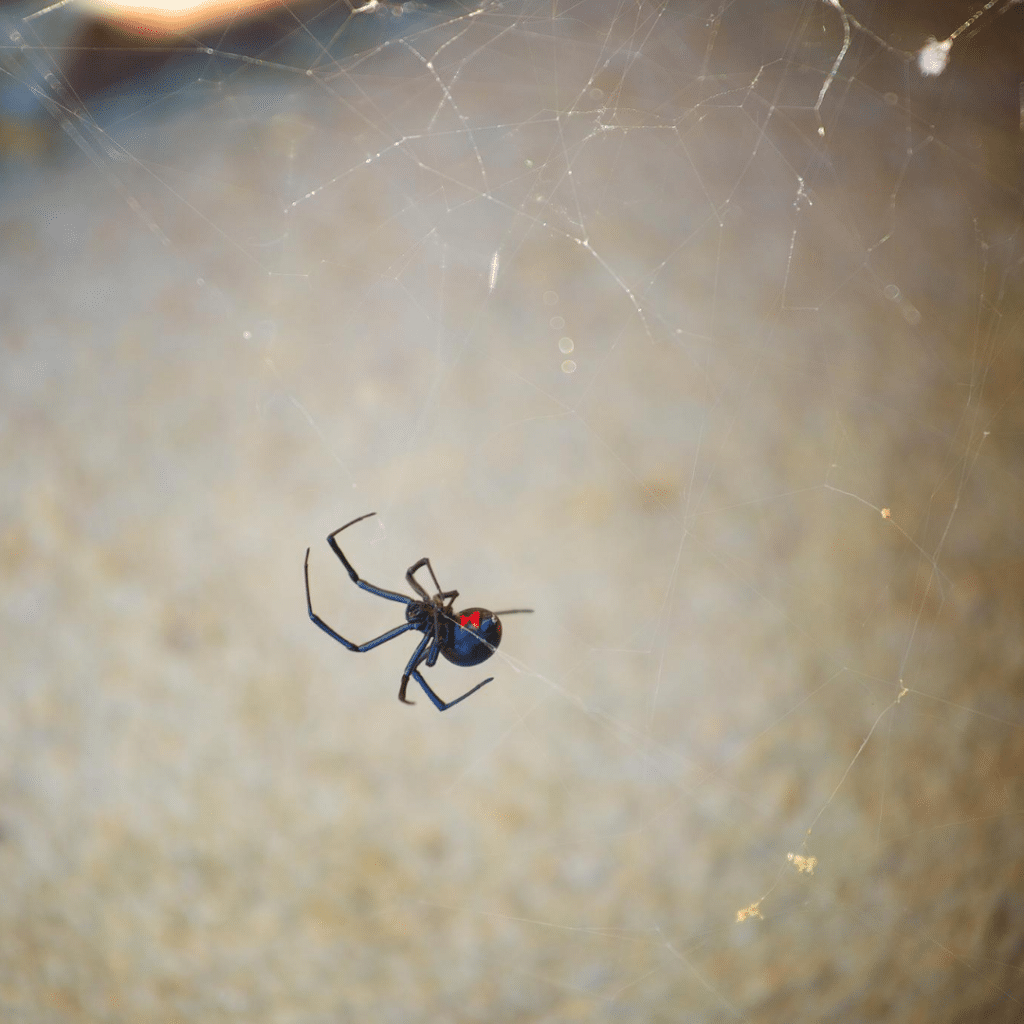
Frequently Asked Questions
How common are spiders in Arizona?
Arizona is home to 27 species of spider. Every home will house a spider at some point, with different species preferring certain landscapes, temperatures, and hiding spots. Not all spiders are dangerous, although it’s important to know which ones are. In some cases, spiders can be good to keep around the home as they can limit the population of more destructive pests.
What are the warning signs of a spider infestation?
- Webs in and around the home
- Eggs sacs
- Spider droppings
- Seeing multiple spiders in the home
- Excess flying pests
- Finding bites on the body
How do you get rid of existing spiders?
- Vacuum webs, spiders, egg sacs and dead insects
- Use sticky traps
- Remove moisture and clutter
- Seal and cracks in the foundation
- Schedule regular integrated pest management with a professional exterminator
How do you identify spider egg sacs?
Spider eggs sacs are small white or light-colored spheres that look like golf balls or grapes. They’re typically wrapped inside a silk sac to help incubate the offspring. Spiders usually lay egg sacs in their webs hidden in corners of the home and within cluttered spaces.
How do you prevent spiders in your home?
- Vacuum frequently to get rid of cobwebs and dead insects
- Get rid of built of moisture and open water sources
- Extermination of existing pest problems
- Remove clutter that can be used as a hiding spot
- Maintain the yard
- Seal openings and cracks
- Schedule regular integrated pest management with a professional exterminator

Pest Control and Removal Services
Our team works to protect Arizonan homes and businesses from daily nuisances to the most destructive pests, including:
Related Articles
Instant Pest Removal Now!
Receive an instant pest removal and pest control quote now!














